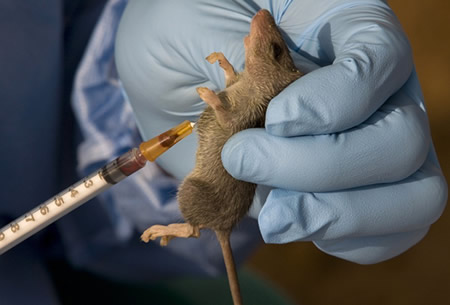Lassa Fever victim identified
 The victim of Ghana’s first case of Lassa fever has been identified as a 26-year old man from the Kintampo North District.
The victim of Ghana’s first case of Lassa fever has been identified as a 26-year old man from the Kintampo North District.
A joint statement by the Ghana Health Service, World Health Organisation and Government, which confirmed the case said, the patient, on February 23, was rushed to the Tema General Hospital with general body weakness, severe headache, joint pains, profuse vomiting of blood with clots, but he died on died February 28.
“The symptoms started on February 22,” it said. The patient had come from the Kintampo North District about a few weeks ago to Tema. Within the three-week period, he also travelled to Eastern, Volta and the Brong-Ahafo Regions.
“He was suddenly taken ill on February 22 and he reported to the Tema General Hospital on February 23, after the symptoms had worsened and he was admitted.
“The patient was seen at the Emergency Unit of the Hospital and resuscitation and further investigations were started.”
The statement said some blood sample was taken and sent to Noguchi Memorial Institute for Medical Research for laboratory investigation and it was confirmed as Lassa Fever.
It said the patient was managed in the isolation unit and was later moved to the Infectious Disease Centre at the Tema General Hospital.
The patient’s condition improved for a while, it said, but started deteriorating on the night of February 27.
“Unfortunately, he died in the early hours of February 28,” it said.
It announced that the Ghana Health Service and the Ministry of Health had taken certain actions, which are: “The safe and dignifying burial to be done under supervision and support of trained professionals and enhancing surveillance, including Points of Entry (POEs) Surveillance with screening at the respective POEs.
Additionally, it said, contact tracing and follow up processes had been initiated and Regional and districts health facilities had been informed about the outbreak.
Others are: The ongoing Media Sensitisation and Public Education, which started about two weeks ago, following of the alert from the outbreak in Nigeria early this year, and the sensitisation of staff on Lassa fever (Prevention, Case Management, Standard Precautionary Measures, and Barrier Nursing.
Also, processes, it said, had been initiated to mobilise and stockpile essential logistics, such as drugs and Personal Protecting Equipment.
Public Health Emergency Management Committees at all levels (National, Regions and Districts), it said, had been activated and the Ghana National Technical Coordinating Committee, which is multisectoral and multidisciplinary, had been activated and they had met to discuss response activities for containment.
The statement appealed to the public to adhere to actions towards prevention and protection against the further spread of the disease as per information sheet on the disease attached.
The statement explained that: “Lassa Fever is an acute viral infectious disease, which is endemic in West Africa. The disease is gradual in onset with non-specific signs and symptoms.
“About 80 per cent of infections are mild or without symptoms, however, the disease can be severe and fatal.
“The incubation period is between two and 21 days.”
Ghana, in 2011, confirmed few cases of Lassa fever in the Ashanti and Eastern regions.
The statement said early symptoms of the disease include: fever, general weakness, and malaise.
“After a few days, headache, sore throat, muscle pain, chest pain, nausea, vomiting, diarrhoea, cough, and abdominal pain may follow.
“In severe cases, facial swelling, fluid in the lung cavity, bleeding tendencies (from the mouth, nose, vagina or gastrointestinal tract) may occur.
“This may result in low blood pressure and shock.
“Late presentation may include shock, convulsion, disorientation, coma, multiple organs failure.
“Complications during recovery include permanent hearing loss (30 per cent of cases); transient hair loss; and gait disturbance.
The disease may present like Ebola, Yellow fever, Malaria, Typhoid fever, Respiratory Tract Infections, Ear, Nose and Throat Infections,” the statement said.
It explained: “Lassa fever is transmitted to humans through contact with the urine, saliva, faeces and blood of rodents. The disease is endemic in rodent population in parts of West Africa. The reservoir for the virus is the “multi-mammate rat”.
“Person to person transmission through direct physical contact with body fluids like blood, saliva, stool, vomitus, urine, and sweat of infected persons and soiled linen used by a patient.
“Sharp instruments, such as needles, that have been used by an infected persons and the Non-professional handling of persons who have died of Lassa Fever must be avoided.”
The statement, while highlighting the need for prevention of Lassa Fever, however, said there was an effective drug for treatment if reported early to a health facility/centre.
It called for the promotion of good “community hygiene” in order to discourage rodents from entering homes, the storage of grains and other food stuffs in rodent-proof containers, while the disposal of garbage should be far from the home.
Others are the maintenance of clean households and keeping cats to scare rodents away.
Family members should avoid contacts with blood and body fluids, while caring for the sick and the burial of the dead from Lassa fever should be done by trained persons, it said.
Source: GNA
